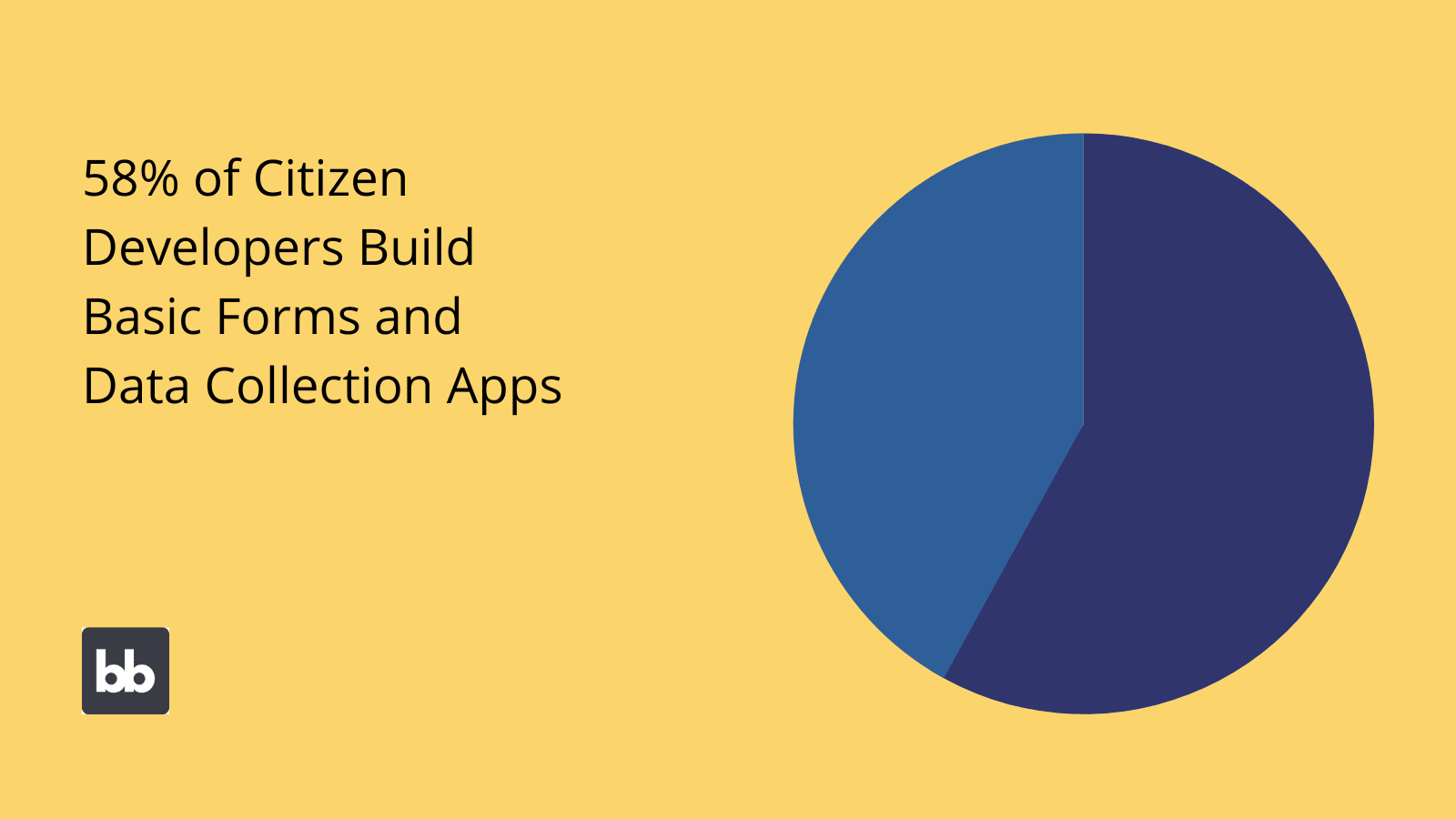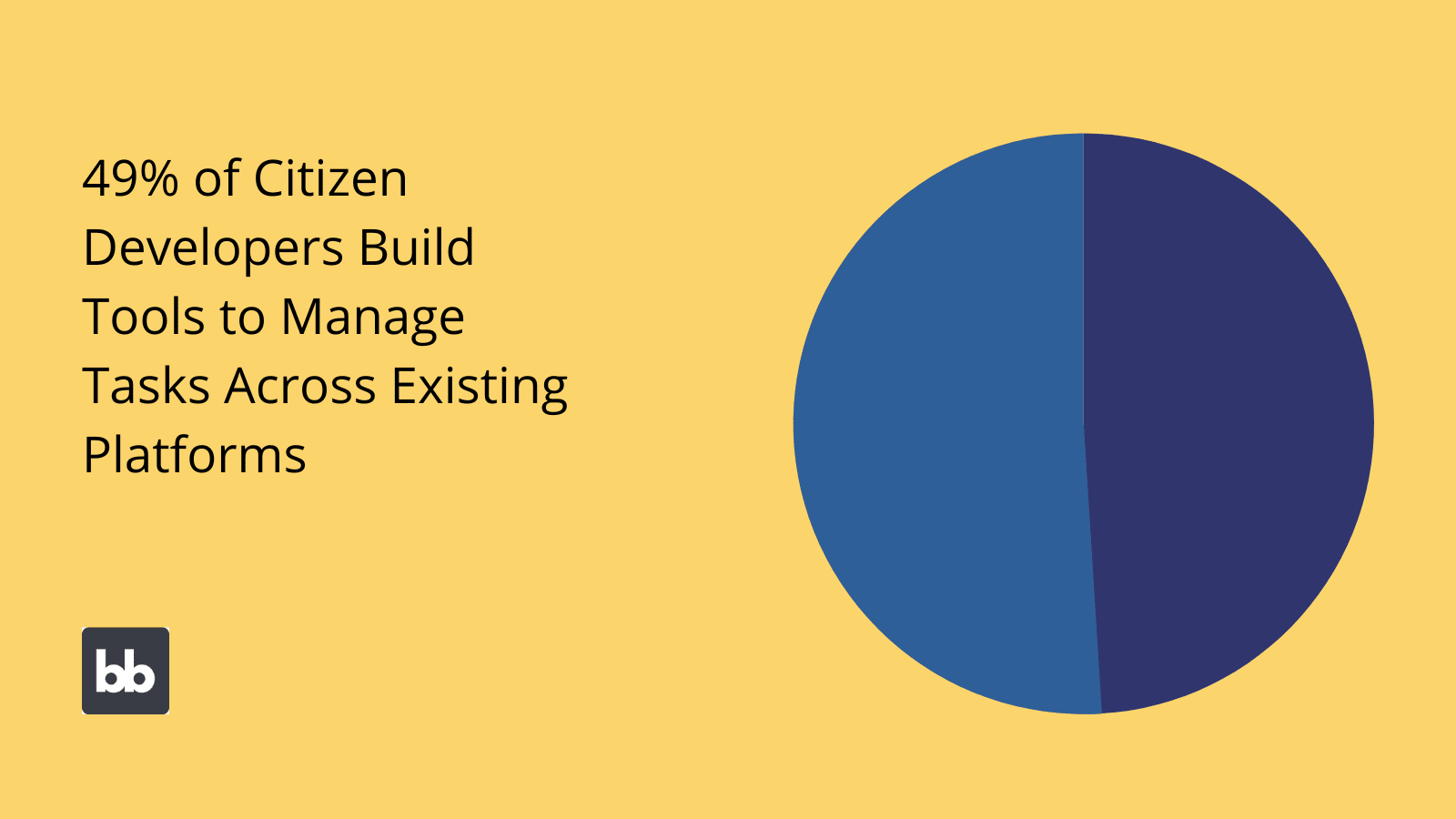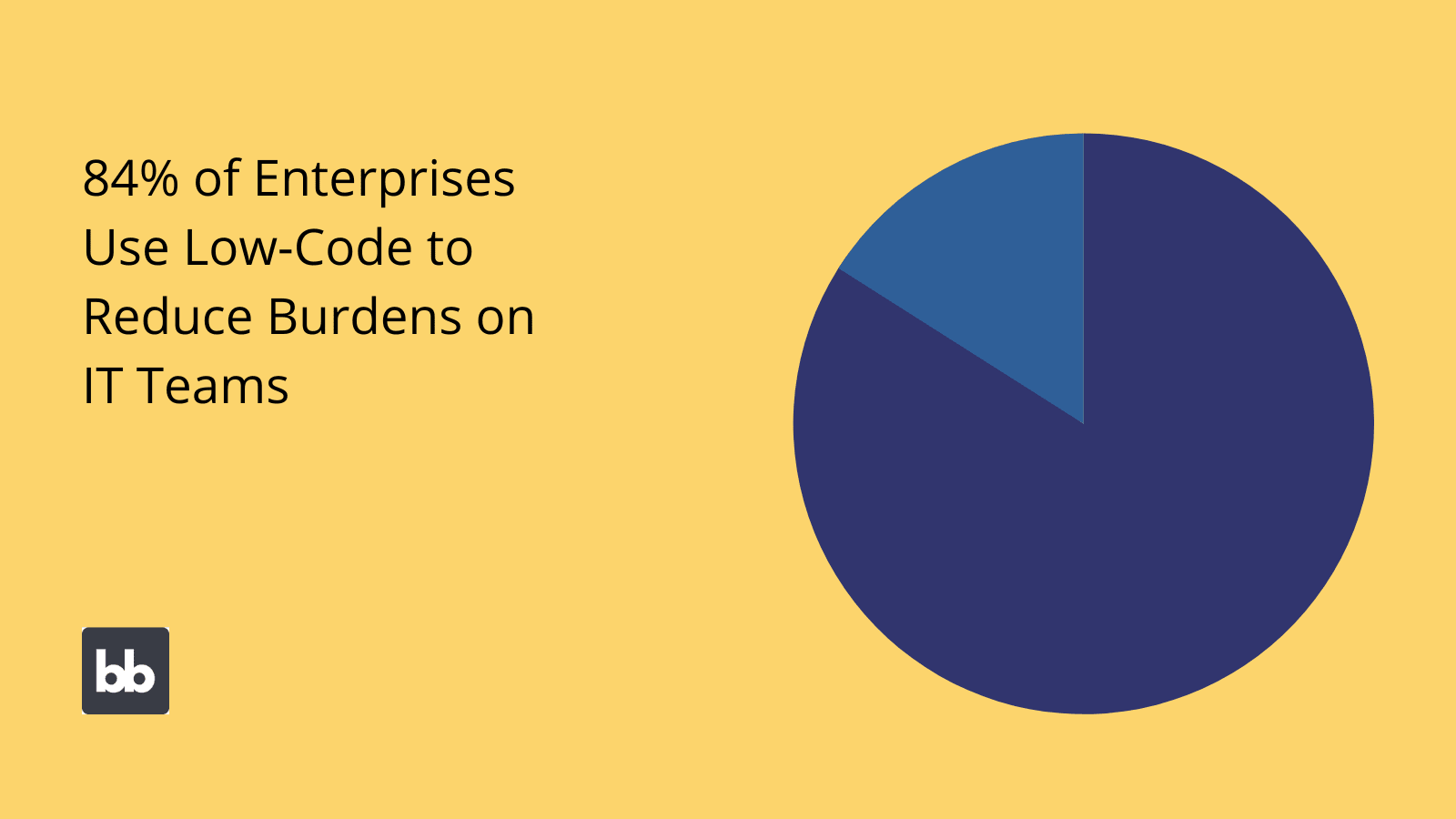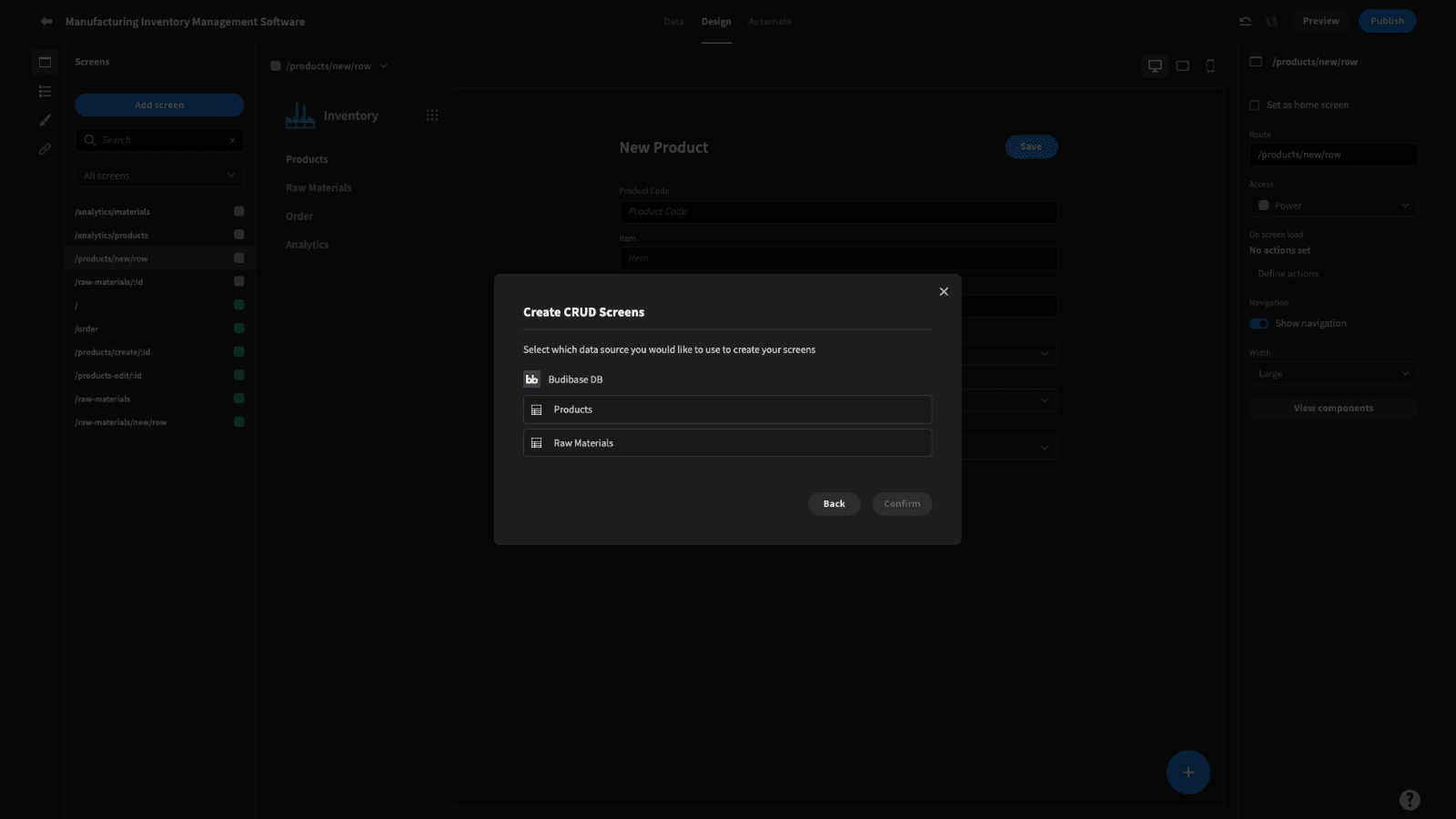Citizen Developer Tools & Software | In-Depth Guide
Citizen developer tools are some of the hottest items on modern IT teams’ procurement lists. Unfortunately, if you asked 100 IT managers what this means, you’d probably get 100 different answers.
That is, there’s no single established definition of what citizen development software is.
Unlike a CRM tool or an ERP platform, a citizen developer tool isn’t so much defined by what it does in terms of specific features as it is by who uses it.
Of course, we still need to be conscious of what they’re using it for, but this varies significantly across different organizations and even departments.
This makes life a little bit tricky when you’re making procurement decisions.
So, today we’re going to cover everything you need to know about choosing and using citizen development tools for your business.
But first, let’s circle back to the basics.
What is a citizen developer tool?
A citizen developer tool is any platform that colleagues other than your specialist devs use to build custom solutions. So, the specific features of the right tools depend on the kinds of solutions they need to build.
As you might expect, this is rarely anything incredibly complex or sophisticated.
Instead, the approach is generally to empower non-specialists to build simpler tools, freeing your in-house development team to work on more complex projects.
This means that citizen developer software can take a few different forms, as we’ll see in more detail a little bit later. But for now, this could mean building full-scale applications or simply adding functionality within or around the edges of existing tools.

(Gartner )
So, citizen developer platforms normally fall under the umbrella of app-builders, automation platforms, or even just specific customization features within existing SaaS tools and business applications.
Do citizen developers really need specific platforms?
It depends.
Often, your citizen developers will use different tools than their specialist counterparts because they’re focused on building different use cases, but this isn’t necessarily the case.
One way of thinking about this is that the purpose of citizen developer software is to make it faster and easier to build specific kinds of solutions - this looks a bit different to how we create applications in traditional development processes.
If your in-house devs need to build similar applications too, they’ll obviously benefit from having the same tools as citizen developers.
So, citizen development might be the impetus for procuring these kinds of tools, but there’s no reason that this should stop you from rolling them out to the professionals too.
However, it’s worth noting that this principle doesn’t swing the other way.
For example, you couldn’t hand the app development tools your specialist developers use to one of their operations team colleagues or other business users and expect effective results. So, we need to understand the distinction between these different kinds of tools we can use to build apps.
How does citizen developer software differ from traditional development tools?
In traditional application development, the software developer themself does most of the heavy lifting. There’ll always be a degree of reusability for things like components and basic functions, but in general, traditional development means building tools from scratch.
For citizen developers, this isn’t really an option.
As in, it’s unlikely that many non-specialists would have the skills to build custom tools from the ground up. Instead, the focus of the citizen development journey shifts to offering streamlined, user-friendly development experiences, to make building mission-critical apps as easy as possible.
Remember, citizen developers are business users who need to create business apps.
The key ingredients here are reusability, autogeneration, low barriers to entry, and high flexibility.
This is a long way away from sitting writing code in an IDE.
Similarly, we can’t really expect our citizen developers to have all the skills needed to actually deploy, manage, and maintain their tools in the real world. Building software isn’t their primary responsibility, so they just aren’t going to be up to the task here.
So, citizen developer tools must address this too. For instance, with one-click deployments or native hosting options.
As such, one key characteristic of effective citizen developer tools is offering coverage of the entire app-building process, whereas traditional development tools might only feed individual aspects of this, like interface design or data modeling.
What kinds of software do citizen developers use?
So, we know that citizen developers don’t necessarily use dedicated tools as such, but there are still key characteristics that decide whether or not a particular platform will be of any use to non-specialists.
In other words, the key thing isn’t whether a specific vendor refers to their platform as a citizen developer tool in their marketing materials. What’s important is whether citizen developers use it and find it valuable.
With this in mind, let’s think about the specific kinds of software that citizen developers have available to them, as well as the kinds of users and solutions that each is suited to.
Everyday office tools
Citizen developers can actually get surprisingly far with the kinds of everyday business tools that already underpin your daily operations.
Spreadsheets are the most obvious example of this. This might not be as exciting as full-on app-building, but it’s probably the most ubiquitous way for employees to build simple solutions for visualizing, managing, and processing data.
For example, they might build a Google Sheets dashboard .
This is naturally a low-cost option, as you don’t need to license any extra tools or provide much in the way of additional training.
However, the kinds of solutions that can be built are probably too limited for this to be a viable basis for your citizen development program. Check out our guide to spreadsheets vs databases for a fuller exploration of this issue.
Existing SaaS tools
Nowadays, more and more basic business functions are based around different SaaS platforms. Many, though not all, of these offer strong scope for customization around their core functionality.
This can come in a couple of different forms, including creating custom workflows, automating specific tasks, or integrating with other existing tools in your software stack.
For our purposes, the tricky thing is that it’s hard to generalize here. That is, there are too many SaaS vendors that offer too much variation in the customization they support to make many sweeping statements.
Basically, you’ll need to think about these on a case-by-case basis. For instance, do you need to pay extra to access automation features? Do specific platforms support external data connections? Do they fit your wider security needs?
Workflow & process automation platforms
Automation tools are another cornerstone of citizen developer software stacks. These are highly flexible, configurable platforms that are used to eliminate the need for specific manual actions.
Normally, dedicated automation tools are based around a flow-chart UI, for visualizing the path that resources follow between different nodes and actors. This means defining specific triggers and actions to create automated workflows, replicating human decision-making.
In some tools, you’ll also be able to create simple interfaces for users to interact with your automated processes. Other times, you’ll need to rely on an additional tool to do this.
There are a couple of clear drawbacks to using automation platforms as citizen developer tools, however.
One is that they can offer fairly limited native functionality, meaning you’ll often need to rely on additional tools, especially for more use case-specific actions. Or, your particular use case might simply not be possible with a given tool.
Another is limited configuratbility and flexibility. For example, flow-chart-style automation platforms often have limited support for more esoteric integrations, external data sources, or legacy platforms.

(Gartner )
Integration tools
Integration tools are a bit like automation platforms, but more tightly focused on streamlining individual actions, rather than entire processes and workflows. The idea is to provide a platform for linking actions across multiple platforms.
The easiest way to understand this difference is to think about how each kind of tool might be used in a similar context.
So, say your use case was around how you generate invoices when a service operative carries out a piece of on-site work for a client. With an automation tool, the idea would be to streamline the whole process, from initial request to completion.
With an integration tool, you might only be interested in passing specific data from your time log platform to an invoicing tool, whenever a new work log is submitted.
So, the idea is basically to make different platforms talk to each other in specific, discrete ways. This is a very helpful tool for citizen developers, but it’s unlikely to be sufficient on its own.
Instead, most other categories of citizen developer software will rely on integration tools, like Zapier, to connect new and existing tools.
Low-code development platforms
Finally, we have low-code and no-code tools. For most businesses, low-code is synonymous with citizen development. Essentially, these are app-building tools that focus on empowering developers of all abilities to build custom tools faster, with less manual intervention.
For instance, with reusable components, autogenerated screens, and simple data source configuration.
The reason that citizen development and low-code sit so closely together is that both recognize the fact that professional developers spend an inordinate amount of time on simple, repetitive projects.
Low-code is revolutionizing the way that businesses build custom tools, by eliminating the bulk of the legwork needed to bring development projects from ideation to completion.
We’ll see how Budibase is leading the charge a little later.

(G2 )
Other considerations when choosing citizen developer tools
Of course, any software procurement decision involves a number of competing concerns, well beyond the simple question of what a specific platform is capable of. Citizen developer tools are particularly challenging in this regard.
This is just the nature of the beast.
That is, the whole point of citizen development is empowering non-specialists to create solutions for their teams. This introduces a fairly wide range of extra challenges that need to be mitigated.
Check out our guide to citizen development to find out more.
Here’s what you need to keep in mind.
Cost & ROI
In almost every case, the reason that business turn to citizen development is financial. That is, to save money on internal development. So, we’ll need to weigh up what we expect to save against the costs we’re going to incur along the way.
First of all, we have three main categories of direct costs. These are:
- Licensing costs for citizen developer tools.
- Operational costs of rolling these out.
- Labor costs incurred by end users.
Secondly, we have the indirect and hidden costs that can be incurred as a result of the other issues we’re going to look at in this section.
Your goal is, of course, to compare the sum of these to your projected savings, to calculate the potential ROI of any given tool.
Security
Security is probably the most obvious concern when choosing citizen development software. The key is to identify platforms that will offer similar security as you’d expect from off-the-shelf solutions or traditional in-house builds.
Specifically, there are two strategies you can employ here. One is prioritizing specific security features, like self-hosting, SSO, and RBAC.
The other is to clearly delineate the kinds of actions your citizen developers can take.
For instance, by providing approved tools, designating specific data sets that can be used for development projects within teams, and optimizing workflows around how tools are approved and published.
Efficiency
In the context of citizen developer tools, there are a few different kinds of efficiency that we need to consider. The first is, obviously, how quick and easy it is for employees to build custom applications.
This is essentially a function of usability.
Another is the amount of additional admin time and effort required to manage end users.
This becomes more and more important the larger the number of end users our tools are rolled out to.
Again, we can turn to things like SSO and implementing RBAC to minimize the admin burden incurred here, thereby boosting efficiency.
Finally, there’s the extent to which our IT professionals need to intervene in citizen development projects. So, for example, if your team’s output ends up creating a huge burden on your support team, then we couldn’t say that the overall initiative is particularly efficient.
Process adherence
Process adherence is the extent to which your team follows the rules you put in place to control their actions and output. For our purposes, this means only building the right kinds of tools, using approved citizen developer software.
As for procurement decisions, there are two things to keep abreast of.
The first is how you limit employees’ ability to go off script. This could mean creating additional layers of control using extra tools like approval apps.
You might also focus on reusability, providing screen templates, component blocks, and flexible data sources to encourage process adherence without stifling innovation.
How to build a citizen developer software stack in 4 steps
Now that we have a stronger picture of the key decision points when choosing citizen developer software, we can think about the specific steps you need to follow to build an effective software stack.
For our purposes today, we’re only focused on choosing software. For a fuller discussion of relevant operational issues, check out our in-depth guide to working with citizen developers .
Here we go!
1. Analyze requirements
The first step is thoroughly analyzing and documenting your requirements. This starts with two questions. Namely:
- Who will use your citizen developer tools?
- What will they use them to build?
Besides this, you’ll also want to think about more specific issues relating to your end users. How many of these will there be? Will they interact with your tools in different ways? Where will they be based? What kinds of devices will they use?
These sorts of basic questions are crucial for determining the right citizen developer software for your specific needs.
We can also consider how this cross-cuts with other elements of your IT strategy, both in terms of specific operational issues and with regard to the utilization of your existing assets and processes.
An example of the latter would be listing your requirements in terms of support for external tools and data sets.
2. Choose a core platform
With clear requirements set out, you can move on to choosing the app-builder that will form the basis of your citizen developer software stack.
Obviously, the idea here is to find the solution that best maps to your needs.
One jumping-off point here is thinking in terms of your users’ abilities. For the most part, citizen developers will already be in technical job roles. So, chances are that they aren’t complete novices.
Rather, they’ll often be employees like project managers, operations professionals, skilled creatives, and non-developers within your IT team. Often, they’ll have some basic coding skills, they just won’t currently build applications day-and-daily.
So, the key is to select a low-code platform that reflects this level of technical ability.
For example, Budibase uses autogeneration to remove the legwork from common development tasks, while still providing the space and flexibility to use your own custom code when you need it.
Then, you can cross-reference this with the functional requirements that you identified in your analysis.
Check out our product overview to learn more about what makes Budibase tick.
3. Define related workflows
Controlling, monitoring, and managing your citizen developers creates some unique challenges. These cut across security, compliance, operations, finances, and basic project management.
To understand how, we can take quick a step back. Remember, the basic goal of citizen development is to save time and money, while also bringing shadow IT under the governance umbrella of your technical team.
To ensure that we’re achieving this goal, we must define clear associated workflows. For instance, for project approvals, usage monitoring, user management, and other basic admin tasks.
This necessitates additional internal tools.
Take a look at our guide to citizen development governance to find out more.
So, there’s the obvious question of where these will come from. Since these workflows are unique to your organization, the best option is to build bespoke tools to manage them.
Check out our internal tools page to see what Budibase has to offer.
4. Get stakeholder buy-in
With a clear idea of what your software stack will look like, the final step is gaining stakeholder buy-in for implementing it. Again, there are some unique challenges here. There are two levels to this.
One is that there’s an equal need to convince your IT team, top-level decision-makers, and would-be citizen devs that your tool stack is suitable. Naturally, these stakeholders each have different concerns that must be addressed, from security to efficiency and usability.
The second level is that your colleagues will inevitably treat your citizen developer software stack as a microcosm of the program more broadly. So, any perceived issues will inform their opinion of your citizen dev program generally.
So for example, your IT colleagues could take a security issue within your software stack as indicative of the entire initiative being insecure.
The key here is to engage with stakeholders at all levels to identify and address any concerns that they might have about your choice of citizen developer tools.
Introducing Budibase
Budibase is a developer’s best friend. As the leading open-source, low-code platform, we offer unrivaled functionality, flexibility, and efficiency, all tied up with fast, intuitive developer experiences.
We offer customizable RBAC, optional self-hosting, autogenerated CRUD screens, external data sources, a built-in database, native cloud deployment, and a whole range of other powerful design and development tools.

We think Budibase is the ideal solution for building all kinds of business tools, in minutes.
Don’t just take our word for it though. We’ve built 50 free, deployable app templates to show off what Budibase can do.
Sign up today to start building custom applications for free.